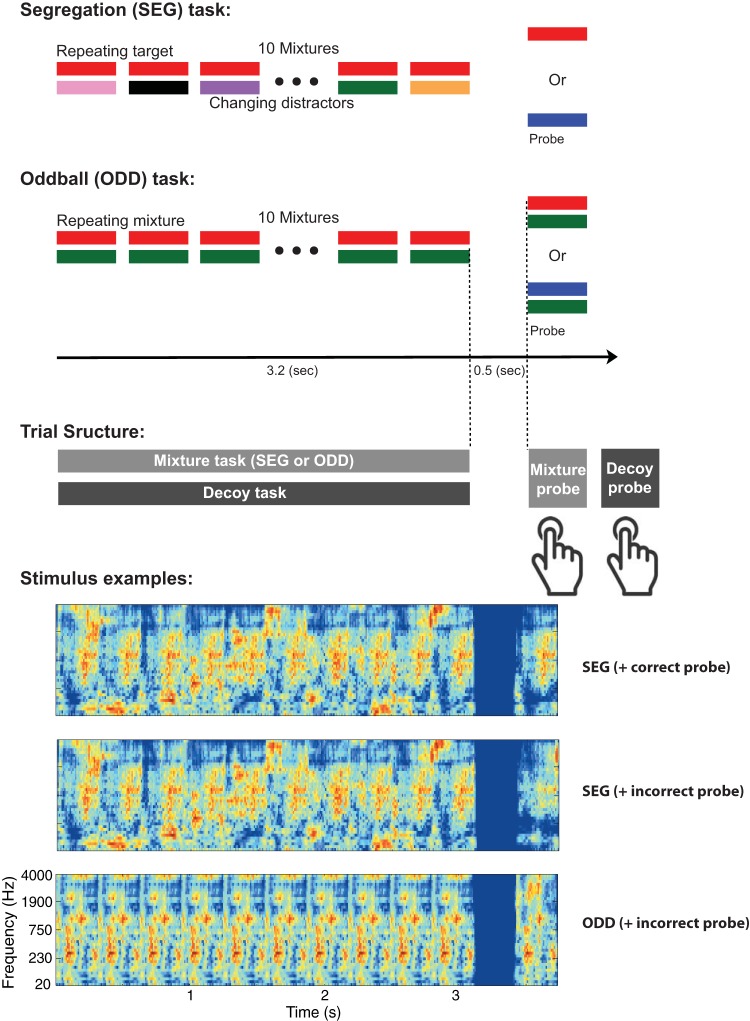Figure 1.
Schematic representation of the mixtures stimuli and trial structure. In the “segregation” (SEG) task, the stimulus consisted of a target sound (red (top) bars) repeatedly presented 10 times, each time with a different distractor (different colored bars). The mixture sequences were followed by a probe sound, and listeners were asked to judge whether the probe sound had been present in the mixture sequence. The probe was either the repeating target sound or a distinct sound. In the “oddball” (ODD) task, the stimulus consisted of 10 identical mixtures, followed by a probe mixture that was either identical to the repeated mixtures, or different by virtue of one of the original sounds composing the mixture having been replaced by a different sound. Cochleograms of example SEG and ODD sequences are provided at the bottom of the figure. Experimental trials were structured such that mixture sequences (SEG or ODD) were presented concurrently with decoy task stimuli to which subjects were instructed to attend. Following the presentation, subjects first responded to the mixtures probe and then to the decoy probe (separate keyboard buttons). Feedback was provided at the end of each trial. See the online article for the color version of this figure.

